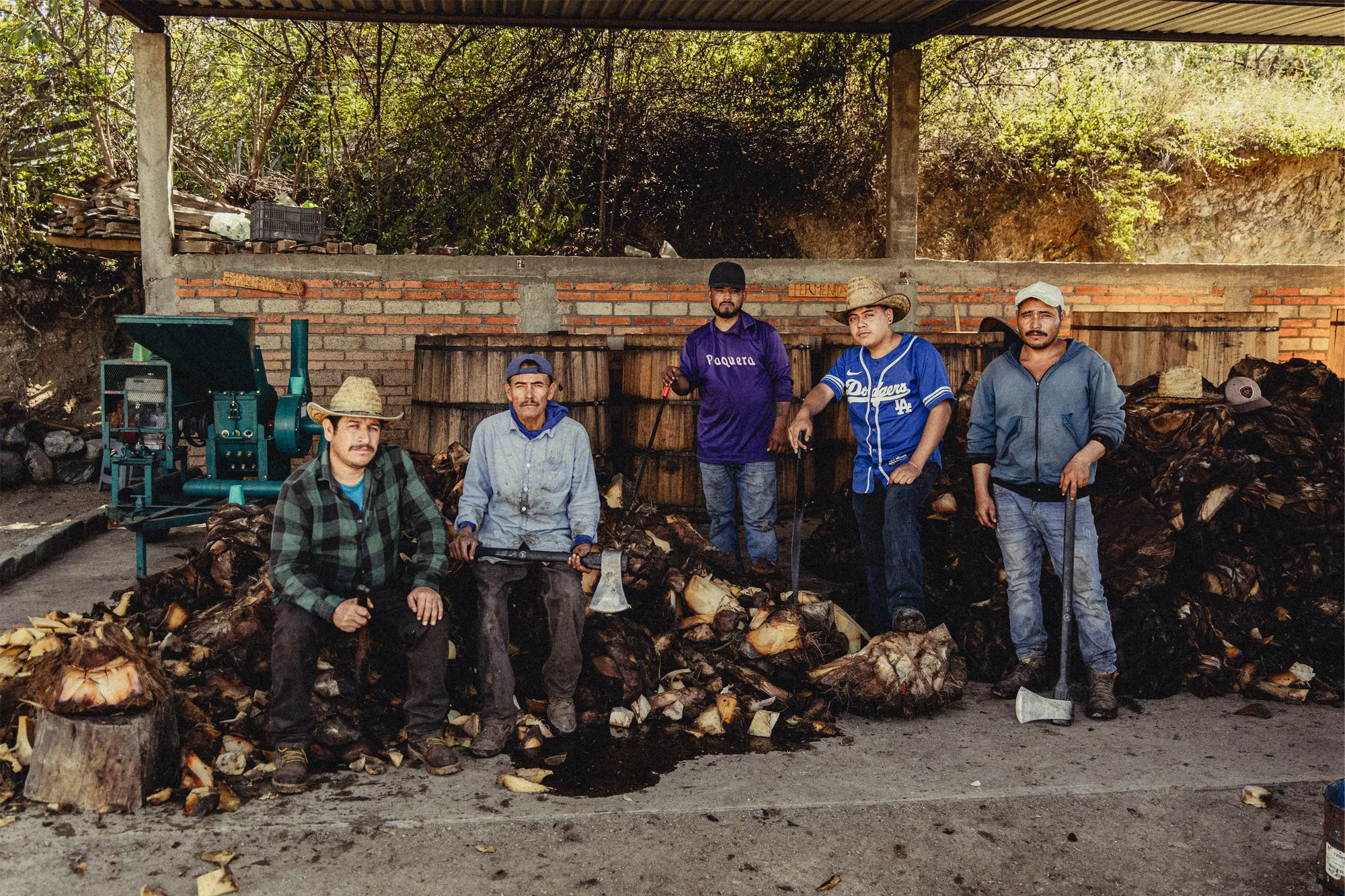






The reproduction of maguey (agave) occurs in two ways: through inflorescence or by producing genetically identical pups.


The sowing season begins in April or May, just before the heavy rains. As the maguey matures, it stores energy as sugar in its heart, or piña, which is the key element for producing alcohol. The maguey is harvested before it flowers or the quiote forms.

Espadín agave requires at least 7–8 years to reach maturity before it’s ready for harvest, while Barril or Cuishe agave (Agave karwinskii var.) takes 12–14 years. It is crucial not to harvest the agave before it has fully matured.

The piñas are cooked for at least six days, depending on the weather, in a conical earthen oven heated by hot stones at its center. We use mesquite and juniper wood.



The piñas are then crushed in a quarry stone tahona to obtain the pulp from the agave, with a horse or mule traditionally powering the large stone wheel as it grinds the agave.

The pulp rests in Awewete or Pino barrels and is left to simmer from 10-17 days, depending on weather.

The pulp is transferred into a copper pot still with an alambique de cobre, a refrescadera (depending on the region), or clay pots, where it boils and the vapors are condensed into alcohol. We filter and recycle all Viñaza.






Mezcal or destillado de agave spirit is to be savored, respected even. We recommend to "smell before you sip" - take small sips to appreciate the layers and complexity of flavors


You must be of legal drinking age to accept our terms & conditions and our privacy and cookie policy.
Drink responsibly.
Your cart is currently empty.